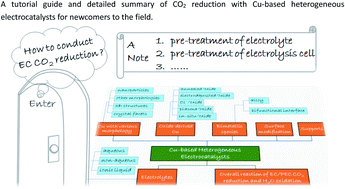An overview of Cu-based heterogeneous electrocatalysts for CO2 reduction
Abstract
The electrochemical (EC) reduction of CO2 is a promising approach for value-added fuel or chemical production. Cu-based electrodes have been extensively used as a ‘star’ material for CO2 reduction to hydrocarbons. This review mainly focuses on the recent progress of Cu-based heterogeneous electrocatalysts for CO2 reduction from 2013 to 2019. Various morphologies of oxide-derived, bimetallic Cu species and their activity in EC CO2 reduction are reviewed, providing insights for the standardization of Cu-based heterogeneous systems. We also present a tutorial manual to describe parameters for the EC CO2 reduction process, especially for the pretreatment of the reaction system. This will offer useful guidance for newcomers to the field. Aqueous and non-aqueous electrolyte effects based on Cu electrodes are discussed. Finally, an overview of reaction systems of EC/PEC CO2 reduction and H2O oxidation for Cu-based heterogeneous catalysts is provided.

- This article is part of the themed collection: Journal of Materials Chemistry A Recent Review Articles


 Please wait while we load your content...
Please wait while we load your content...